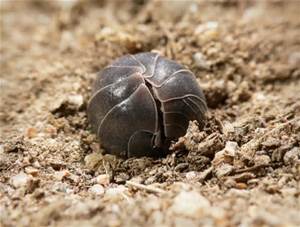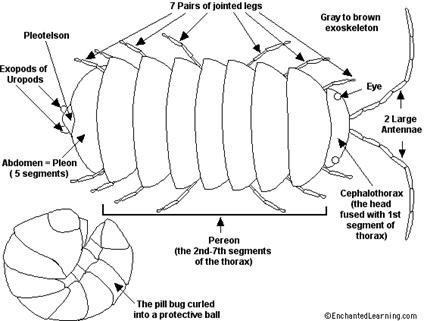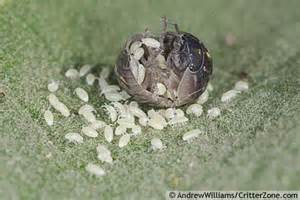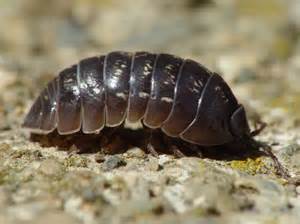Scout: “Why couldn’t I mash him?
Jem: “Because they don’t bother you, Jem answered in the darkness. He had turned out his reading light.–Scout and Jem discussing their roly-poly encounter, To Kill a Mockingbird, Harper Lee.

This pill-bug is a common invertebrate found, well, almost anywhere in North America these days but is a native species across much of Europe. It is not native to North America though it has been introduced here extensively but there are native species of pill-bugs in North America. Pill-bugs are a crustacean (shrimp, crabs) and in the Order Isopoda – which show up in the fossil record up to 300 million years ago. The pill-bug also is known as the pill woodlouse, sow-bug, doodle bug, potato bug, and roly-poly for its ability to roll into a ball when it feels threatened. These small critters are about 0.7 in. long.

They have four pairs of mouthparts and seven main trunk segments where the legs are attached. The next five pairs of “limbs” have been modified (pleopods) and form a flattened and overlapping set of gills through which pill-bugs get their needed oxygen. Thus, they are limited to moist areas. The peopods also have functions in reproduction and excretion. Interestingly, pill bugs do not have a need to urinate, which serves to conserve liquid, as their bodies tolerate the buildup of ammonia gas and excrete it directly through their exoskeleton. The uropods are the final pair of appendages and have sensory and defensive functions.
Because water is such an important commodity pill-bugs have evolved the ability to wick up moisture through their uropods. Another lovely sustainability trait of pill-bugs is their ability to recycle waste. They exhibit coprophagy, which means they will eat their own feces, which is important to recycle some important minerals such as copper. Some mammals also exhibit this trait but for slightly different reasons. Many crustaceans, including pill-bugs, have hemocyanin in their blood, which contains copper, rather than hemoglobin, which contains iron – making well oxygenated pill-bug blood appear blue.
Because of their need for moisture they are most often found in compost piles and leaf litter, under logs, or beneath almost any item that affords a cool and moist refuge. Despite colonizing the land (there are many marine Isopods) pill-bugs did not evolve the effective waxy waterproof cuticle waxes of the insects and spiders and thus are susceptible to desiccation.
Pill-bugs reproduce May through September. The first and second plepods of the male are used for fertilization – female on the left (below); male on the right. Up to 200 eggs are carried by the female – similar to crabs and shrimp. Overlapping thoracic plates form a special pouch called a marsupium on the underside of the pill-bug’s body. When the young hatch (3-7 weeks) they will remain in the pouch for several days before venturing out on their own.


As pill-bugs grow they need to increase the size of their exoskeleton, but they do this in segments – first the back half splits and falls off and a few days later the front section is shed. So if you see a pill-bug that is gray or brown at one end it is in the middle of a molt. Pill-bugs forage on decaying vegetation and in turn are preyed upon by a variety of larger creatures.
Probably everyone is familiar with these as a youngster. They seemed to be especially fond of the moist ground under the cement splash plates at the bottom of the downspouts of my house as a kid. Of course we would tease them endlessly in order to watch them roll up into balls. I remember feeding them to my pet Anole lizards but despite our trying we couldn’t convince our younger brothers that they were good to eat.
